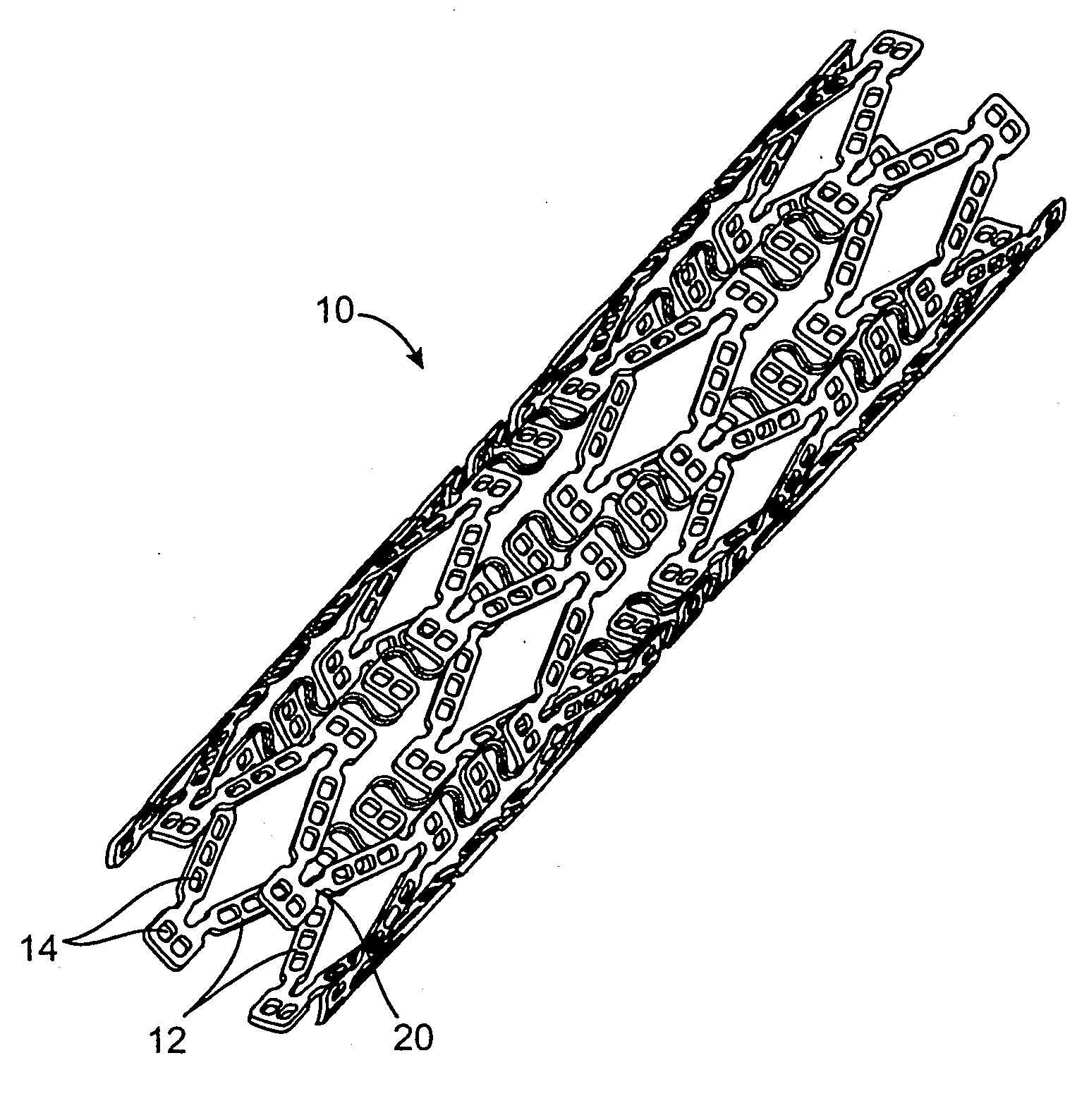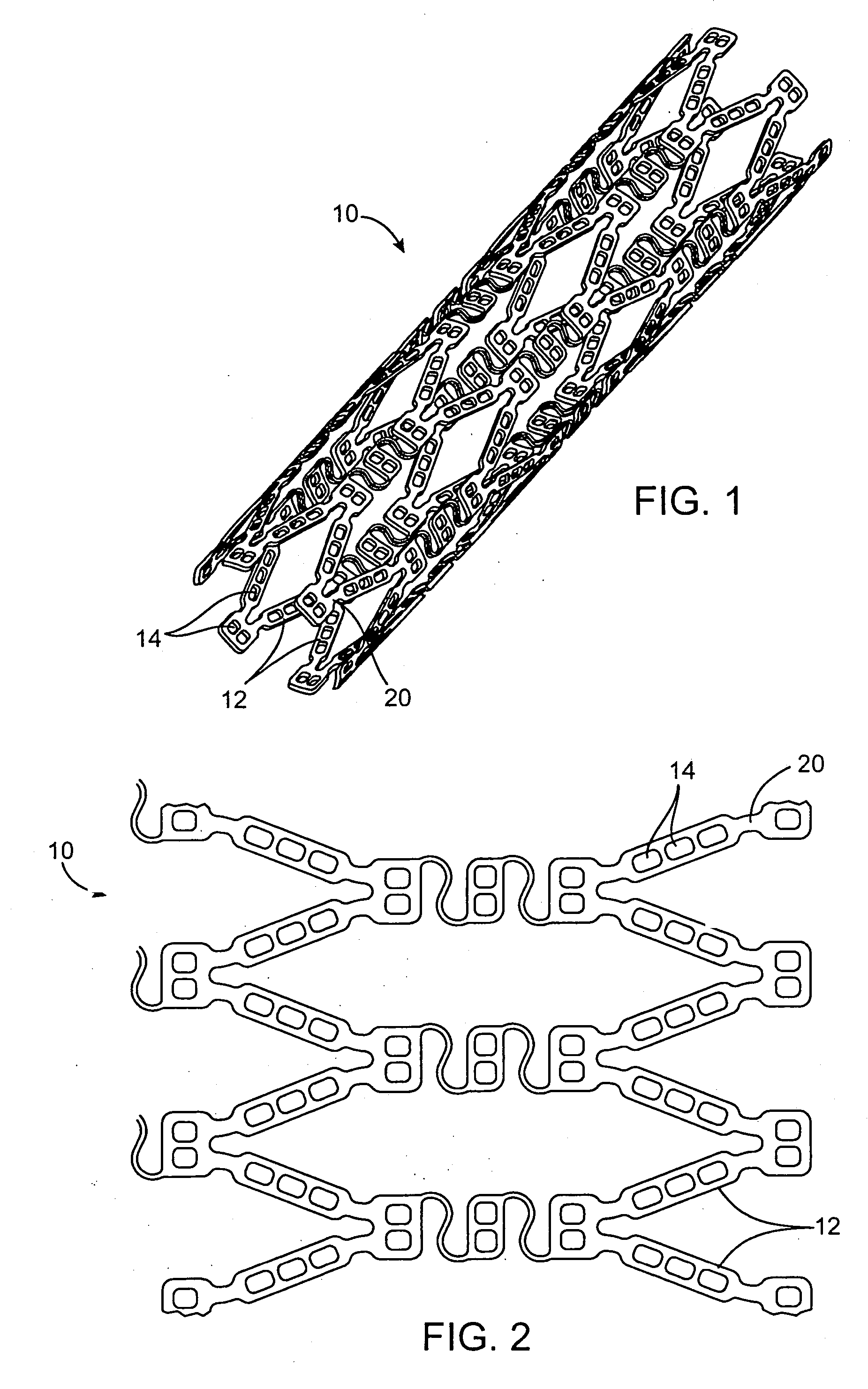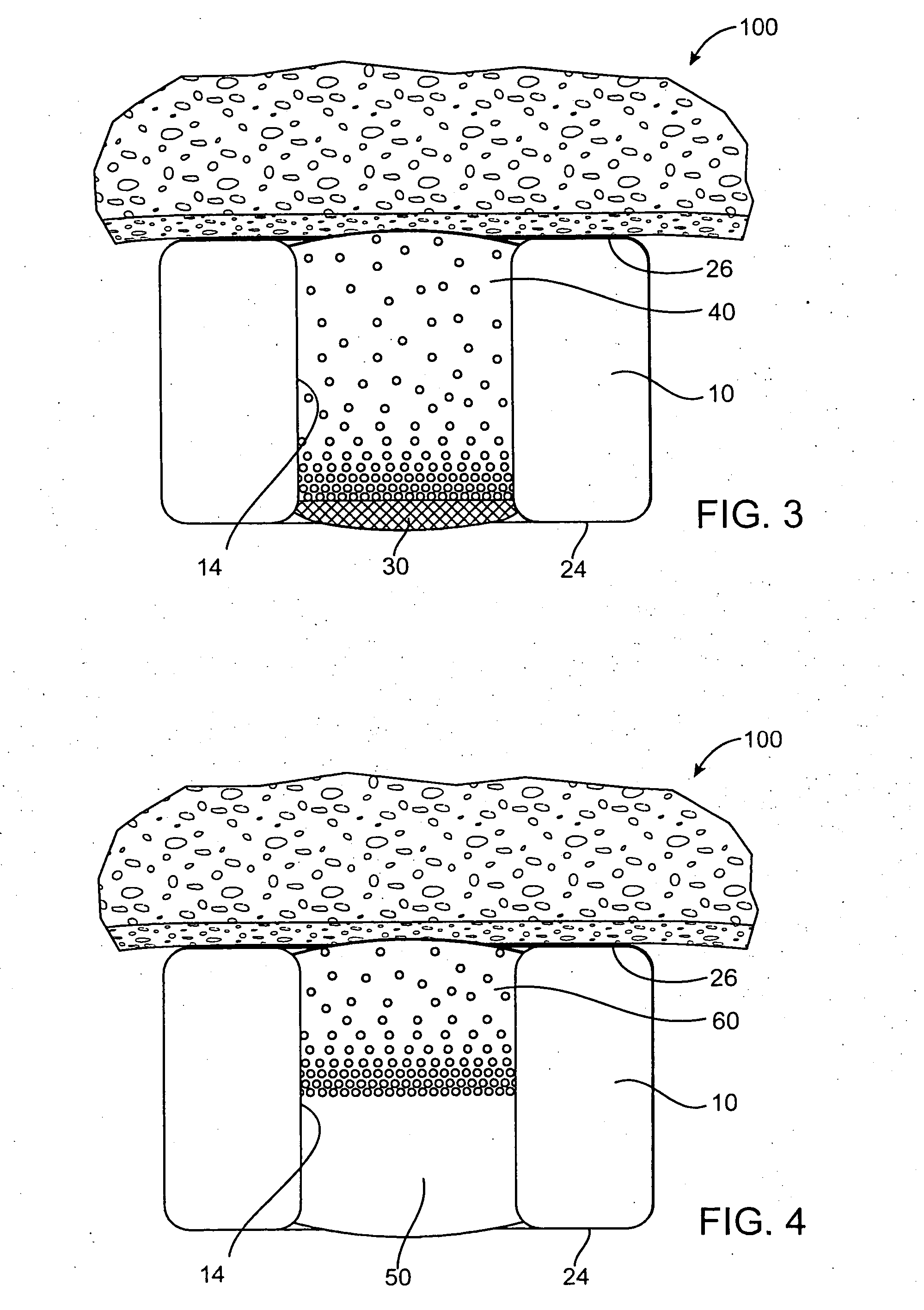Methods of delivering anti-restenotic agents from a stent
- Summary
- Abstract
- Description
- Claims
- Application Information
AI Technical Summary
Benefits of technology
Problems solved by technology
Method used
Image
Examples
Embodiment Construction
[0019] A method for decreasing the level of restenosis following a stent placement medical intervention involves the continuous administration of a dose of an anti-restenotic agent or drug from the stent to vascular tissue in need of treatment in a controlled, extended, and substantially linear drug release profile. It is envisioned that the vascular tissue in need of treatment is arterial tissue, specifically coronary arterial tissue. The method of substantially linear extended release increases the therapeutic effectiveness of administration of a given dose of anti-restenotic agent and reduces side effects.
[0020] In one example described in detail herein the agent or drug will be contained in reservoirs in the stent body prior to release. In the reservoir example, the drug will be held within the reservoirs in the stent in a drug delivery matrix comprised of the drug and a polymeric material and optionally additives to regulate the drug release. Preferably the polymeric material ...
PUM
| Property | Measurement | Unit |
|---|---|---|
| Length | aaaaa | aaaaa |
| Length | aaaaa | aaaaa |
| Fraction | aaaaa | aaaaa |
Abstract
Description
Claims
Application Information
 Login to View More
Login to View More - R&D
- Intellectual Property
- Life Sciences
- Materials
- Tech Scout
- Unparalleled Data Quality
- Higher Quality Content
- 60% Fewer Hallucinations
Browse by: Latest US Patents, China's latest patents, Technical Efficacy Thesaurus, Application Domain, Technology Topic, Popular Technical Reports.
© 2025 PatSnap. All rights reserved.Legal|Privacy policy|Modern Slavery Act Transparency Statement|Sitemap|About US| Contact US: help@patsnap.com



